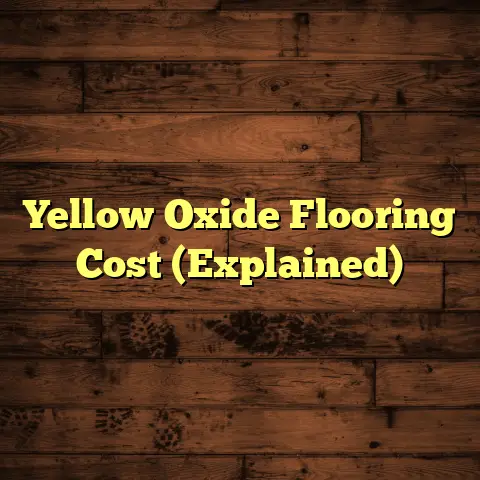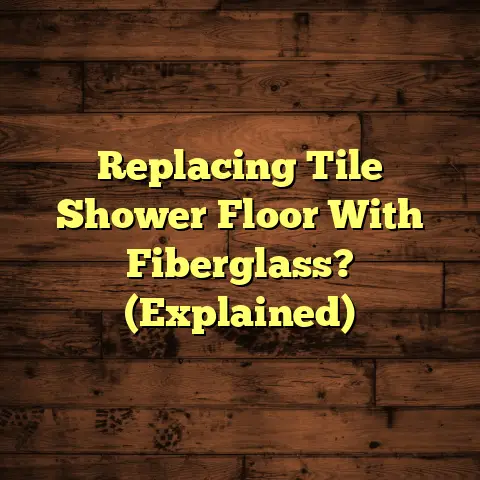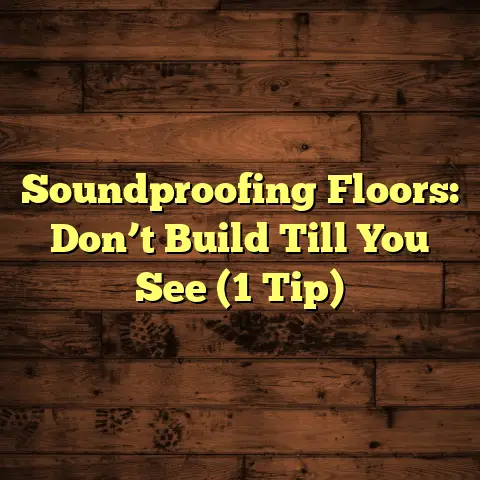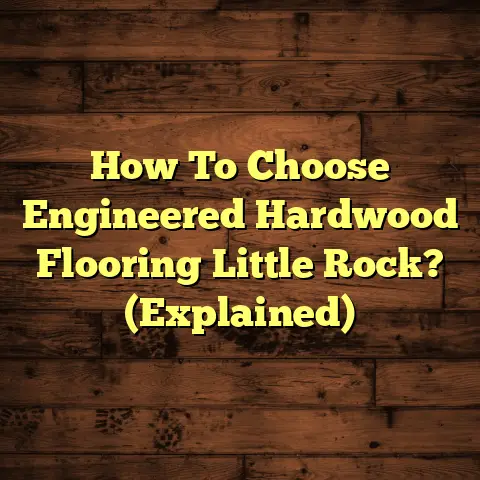Steam Clean LVP? The Shocking Truth! (1 Mistake!)
Introduction: Highlighting Trends in Flooring Choices
The LVP Revolution
Let’s face it, Luxury Vinyl Plank (LVP) has taken the flooring world by storm. I’ve seen it explode in popularity over the last few years, and for good reason. It’s got that sweet spot of looking good, being tough, and not breaking the bank.
Think about it: you get the aesthetic of hardwood or stone without the hefty price tag or the headaches of constant maintenance.
Riding the Trends
What’s driving this LVP craze? Well, a few things:
-
Easy Living: Everyone’s busy these days. Nobody wants to spend their weekends scrubbing floors. LVP is a dream for low-maintenance living.
-
Green Dreams: More and more, folks are looking for eco-friendly options. While LVP isn’t always the most sustainable choice, some manufacturers are making strides with recycled content and responsible manufacturing processes.
-
Tech Magic: The tech behind LVP is seriously impressive. I’ve seen planks that look so much like real wood, you’d swear you could feel the grain. The printing and texturing are getting that good.
-
Clean Freaks Unite: Okay, maybe not freaks, but people are definitely more aware of hygiene. We want our homes to be clean and healthy, and that includes our floors.
Steam Power Rising
And that brings us to steam cleaning. It’s the latest “it” method for getting your floors sparkling clean without harsh chemicals. Steam cleaners are touted as the ultimate germ-busters, making them especially appealing to families with kids and pets.
But here’s where things get interesting, and where I’m going to share something that might surprise you.
Body: The Shocking Truth About Steam Cleaning LVP
LVP 101: A Quick Refresher
Before we dive into the steam, let’s make sure we’re all on the same page about LVP. What exactly is this stuff?
LVP is basically a multi-layered synthetic flooring product. It usually consists of:
-
A wear layer: This is the top layer that protects the plank from scratches, scuffs, and stains. The thicker the wear layer, the more durable the LVP.
-
A decorative layer: This is where the magic happens – the high-definition print that mimics wood, stone, or tile.
-
A core layer: This is the main body of the plank, often made of PVC or a composite material. It provides stability and water resistance.
-
An underlayment (sometimes): Some LVP comes with a pre-attached underlayment for added cushion and sound absorption.
The Good Stuff: LVP is known for being waterproof (or at least highly water-resistant), durable, scratch-resistant, and relatively easy to install.
The Not-So-Good Stuff: It’s not as eco-friendly as some natural materials, and it can feel a bit colder underfoot than wood or carpet.
Steam Cleaning: The Hype is Real
So, what’s the deal with steam cleaning? Basically, you’re using hot steam to blast away dirt, grime, and bacteria. The high temperature of the steam is said to sanitize surfaces without the need for harsh chemicals.
I’ve seen homeowners rave about how steam cleaners have transformed their cleaning routines. They’re easy to use, effective, and leave floors feeling fresh and clean.
But here’s the catch…
Misconception Alert!
One of the biggest misconceptions I see is that steam cleaning is a universal solution for all hard floors. People assume that because it works great on tile or sealed stone, it must be fine for LVP too.
Wrong!
The Shocking Truth: One Mistake Can Ruin Everything
Okay, here it is, the moment you’ve been waiting for. The one critical mistake that homeowners make when steam cleaning LVP:
Using excessive heat and moisture!
Let me explain. While LVP is water-resistant, it’s not impervious to water damage, especially when combined with high heat.
Here’s what can happen when you go overboard with the steam:
-
Warping: The heat from the steam can cause the LVP planks to expand and warp, leading to unsightly buckling or uneven surfaces.
-
Delamination: The layers of the LVP plank can separate, causing the decorative layer to peel away from the core.
-
Damage to the Wear Layer: The protective wear layer can become damaged or dulled by excessive heat, making the floor more susceptible to scratches and stains.
I’ve seen it happen firsthand. Homeowners call me in a panic after their “easy” steam cleaning session turns into a flooring disaster.
Real-Life Horror Story:
I remember one client who steam-cleaned her brand-new LVP floor, thinking she was doing the right thing. She went over the same areas multiple times, holding the steam cleaner in place for too long. A few weeks later, she noticed the planks were starting to buckle and the edges were lifting. She had to replace the entire floor!
Expert Advice: Proceed with Caution
I’m not saying you can never steam clean LVP. But you need to be extremely careful.
Here’s what the experts say:
-
Check the Manufacturer’s Instructions: This is the golden rule. Always consult the manufacturer’s cleaning guidelines for your specific LVP flooring. Some manufacturers explicitly prohibit steam cleaning.
-
Use the Lowest Setting: If steam cleaning is allowed, use the lowest possible steam setting.
-
Keep it Moving: Never hold the steam cleaner in one spot for too long. Keep it moving to avoid overheating the planks.
-
Dry Immediately: After steam cleaning, wipe the floor with a clean, dry mop or cloth to remove any excess moisture.
-
Consider Alternatives: In most cases, a damp mop with a pH-neutral cleaner is all you need to keep your LVP floor clean and looking its best.
Industry Insights:
According to the Vinyl Flooring Institute (VFI), regular cleaning with a damp mop and a pH-neutral cleaner is the best way to maintain LVP flooring. They do not generally recommend steam cleaning, as it can potentially damage the floor if not done correctly.
Conclusion: Recap and Final Thoughts
The Takeaway
Let’s recap: LVP is a fantastic flooring option, but it’s not invincible. Steam cleaning can be a tempting way to keep your floors clean, but it’s crucial to understand the risks involved.
The one critical mistake you want to avoid is using excessive heat and moisture, which can lead to warping, delamination, and damage to the wear layer.
Be Informed, Be Smart
My advice? Do your homework. Read the manufacturer’s instructions, talk to a flooring professional, and weigh the risks and benefits before you reach for that steam cleaner.
Your floors are a big investment, and you want to keep them looking their best for years to come. Sometimes, the simplest cleaning methods are the most effective and the safest.
Happy cleaning (but be careful out there!)





